The Armata Festival and the Allure of Spetses...
Experience Spetses in its most enchanting...
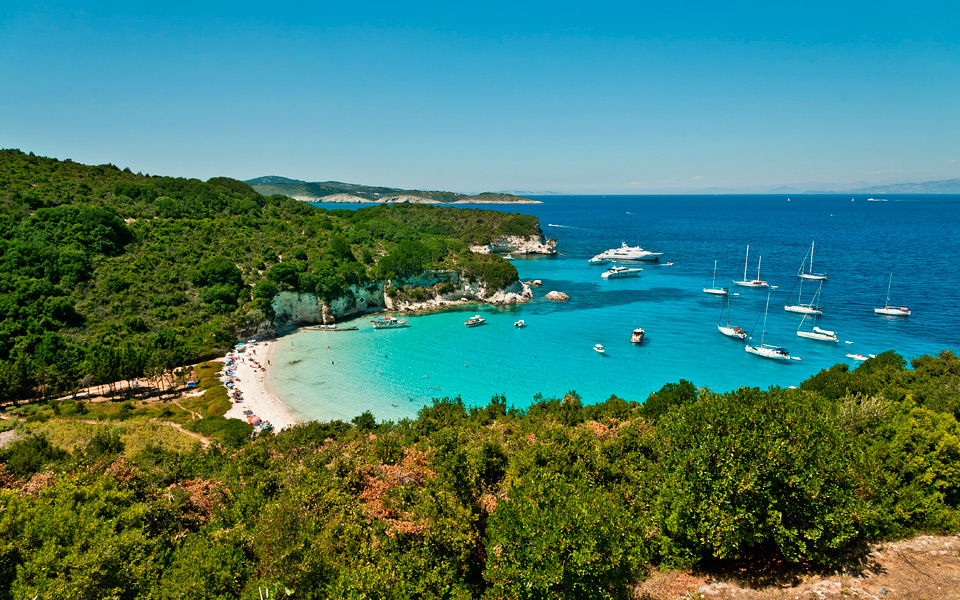
Voutoumi is a pebble-covered beach on the tiny island of Antipaxos.
© Shutterstock
A small island below Corfu, Paxos is green all over and clad with tall olive trees. Planted by the Venetians, they differ from other species found in Greece. Gaios, Loggos, Lakka, and Magazia are the small island’s main villages. The remainder of the island’s inhabited places are comprised of tiny settlements named after families – as suggested by the “atika” suffixes in Greek – such as Bogdanatika, Vlahopoulatika, Zenebisatika, Klonatika, and Antzoulatika.
Though anybody from Lakka would hate to admit it, Gaios, a seaside location featuring stylish neoclassical buildings colored with faded burgundy and pale ochre, is the small island’s main town.
The Paxi islands have been ruled by a succession of powers, each one leaving behind its traces. In 1386 AD, the islands were occupied by the Venetians and passed on to princes and barons as fief. Allied Spanish and Venetian fleets fought triumphant naval battles against the Ottomans in 1537. In revenge, Ottoman admiral Hayreddin Barbarossa recklessly looted the island. The Venetians surrendered the Ionian Islands to the revolutionary French in 1797 for a two-year period. In 1800, the islands were taken over by Russia, which set up the Septinsular Republic, covering the Ionian Islands. In 1815, the British set up a Protectorate of the Ionian Islands. Despite the ruling power’s objections, Paxos took part in the Greek War of Independence in 1821, spearheaded by 23-year-old war hero Giorgos Anemogiannis.
“Paxos is the largest island of the Paxi group of islands. Neighboring Antipaxos, a pint-sized islet measuring just three square kilometers and located a thirteen minute speedboat ride away from Gaios, is surrounded by blue waters.”
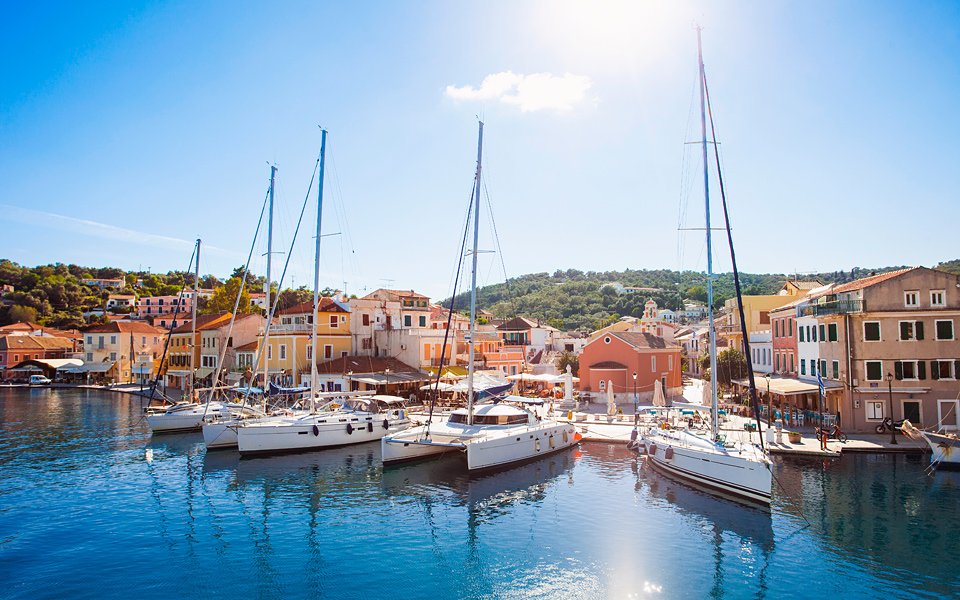
Gaios, with its stylish neoclassical buildings, is the main town of Paxos.
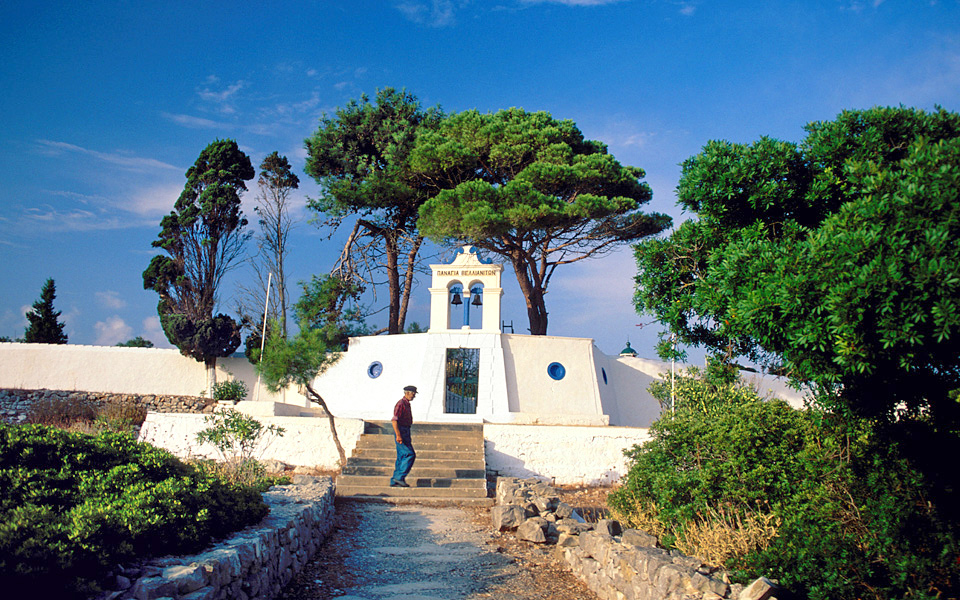
Panayia church on Paxos island.
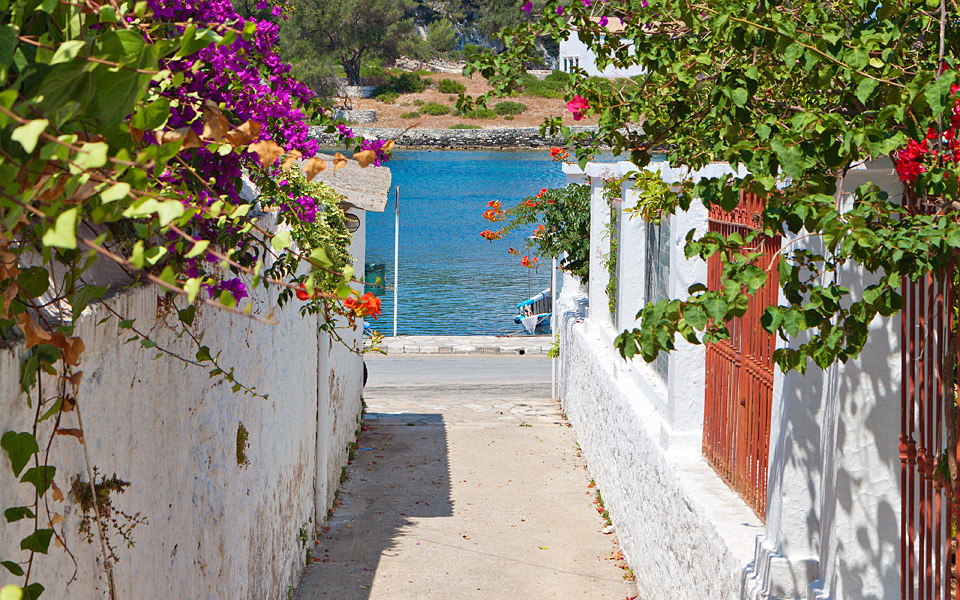
A small alley in Gaios town.
Cobblestoned paths, Spanish Steps, age-old cisterns, the orange, twin-domed Ypapantis church and tall bell tower, which stands alongside it like a gentleman, make up some of the island’s charming features.
According to legend, an icon, defying the law of physics, transferred itself to the spot where this church was eventually built. Also look out for a historic revamped water reservoir and a series of buildings, whose development was funded by 19th century entrepreneur, politician, and national benefactor Andreas Syggros.
Former schools, these buildings are nowadays utilized in various ways – including as shelters for the Paxos museum and the Historic Archive. The names of some of the beaches along the island’s eastern coast seem strange, even eerie. How does one find the courage to go swimming at a beach named Pnigmeni, meaning “drowned woman” in Greek. Not far away from here, things start sounding better. One beach is named Kipos, meaning “garden”.
“The island is classified under Natura, the EU’s network of protected areas that offer havens to threatened species and habitats”
The island’s locals have their own casual way of dealing with reality. I was forced to spend over an hour at a little café in Lakka as I sat waiting for my tour guide to show up. An Englishman sat at a table opposite me and ordered a morning beer as a couple of two-year old local girls played around on their bicycles occasionally scuffling, prompting a grandmother’s intervention. The Englishman ordered a second beer, finished it and left, and the tour guide was still nowhere to be seen. Besides their lack of punctuality, as I found out first hand, the island’s locals also seem offbeat.
How could they not be? They live on a tiny island entirely devoted to tourism in the summer – three months of intense activity – and are then left with just about nothing to do for the year’s remainder. It’s a sharp contrast.
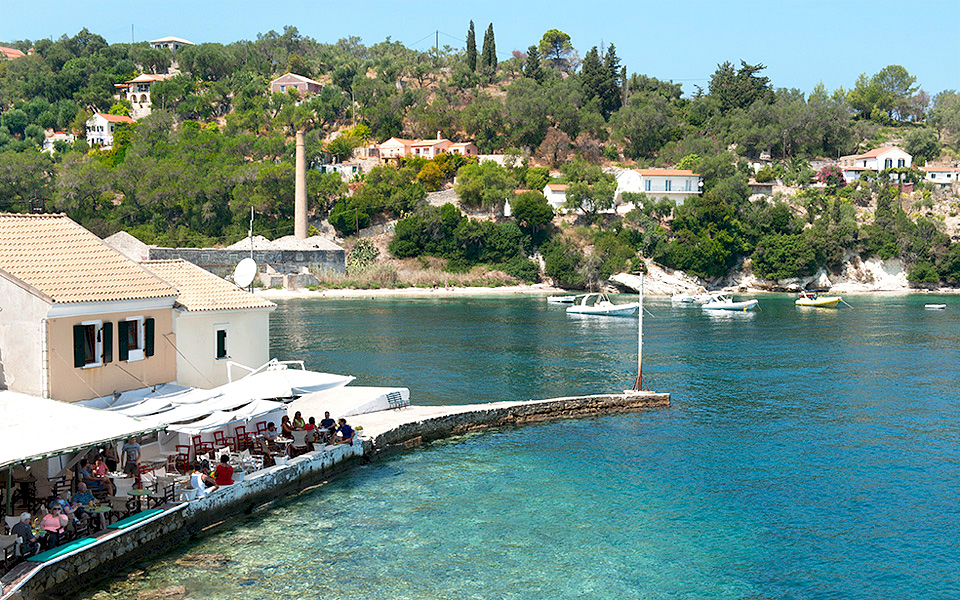
Loggos is one of Paxos' main villages.
© Julia Klimi
Regular disputes between islanders over an old plan to establish a local shipping company have proven detrimental. The idea dates back to the 1980s but locals have not given up. On my visit, I noticed an announcement posted outside a building hosting local council meetings concerning a study for the purchase of a ferry boat by a company to be comprised of Paxos islanders. It was signed by a “temporary committee”. The idea is to gather as many locals as possible, who will each contribute capital, based on their respective capabilities, for the acquisition of a modern ferryboat to link Paxos with Igoumenitsa on the mainland. Profits would be shared accordingly.
The island is classified under Natura, the EU’s network of protected areas that offer havens to threatened species and habitats. As a result, every single Venetian olive tree on Paxos is protected from aspiring lumberjacks, based on a Natura directive. It is maintained by a local group that seems to be taking itself seriously, judging by its engagement with various worthwhile initiatives, including an EU cultural villages program, another promoting activities for the elderly, as well as the support offered to the Paxos International Classical Music Festival.
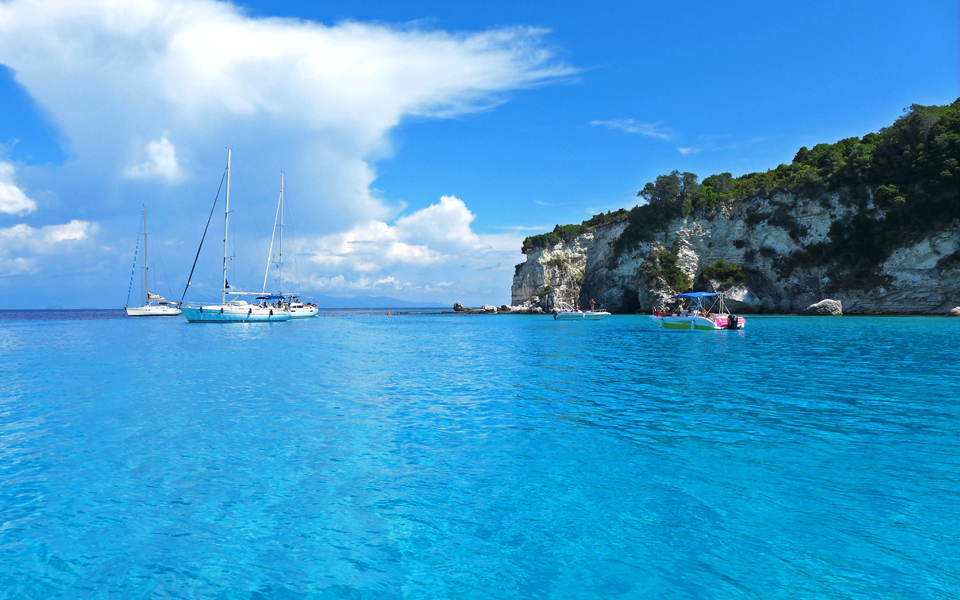
Voutoumi: A pebble-covered beach on Antipaxos.
© Christina Rios
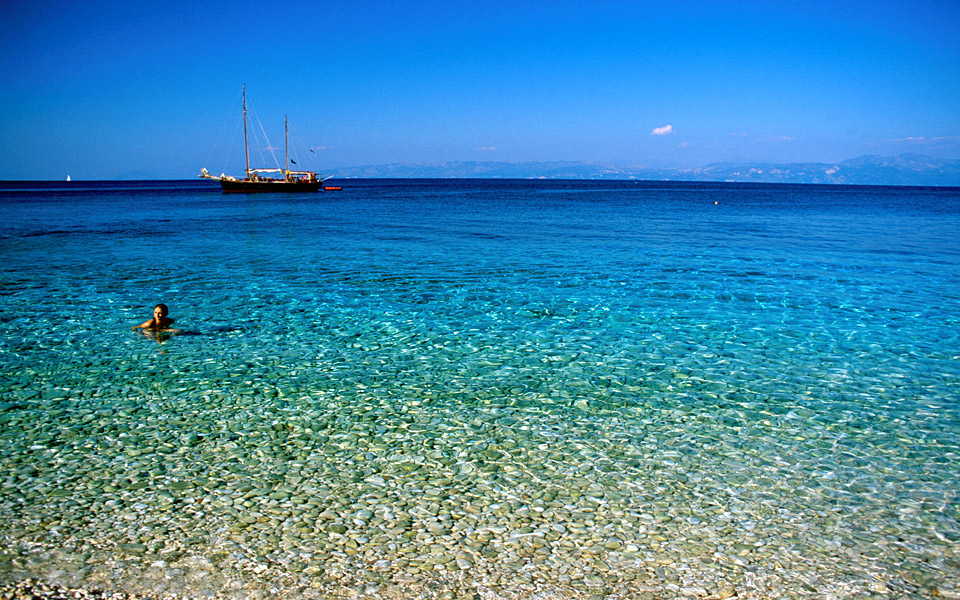
The refreshing waters of Paxi islands are best enjoyed either at the beginning or end of the summer season.
© Shutterstock
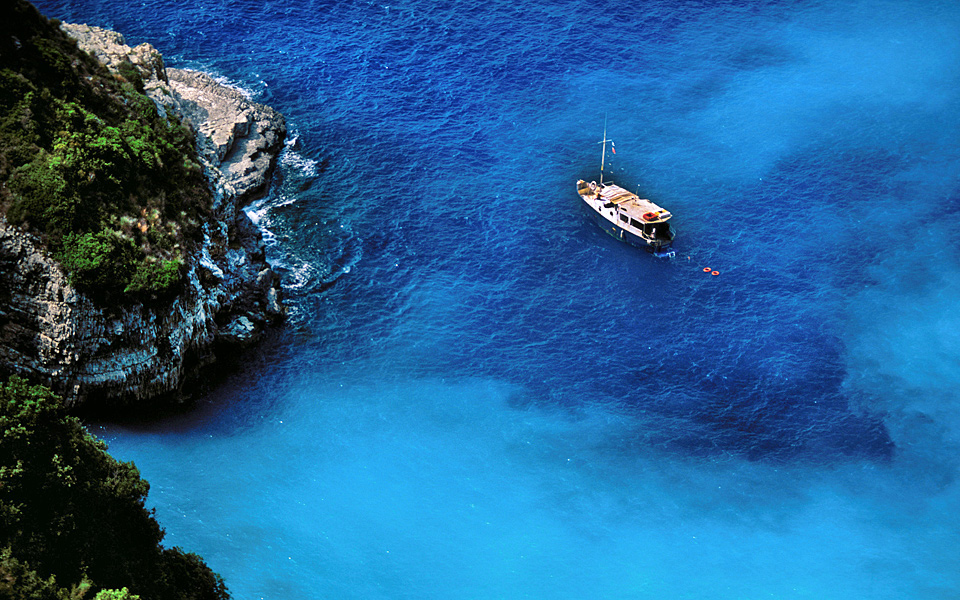
Blue sea of Paxi islands: ideal for swimming.
© Clairy Moustafellou
On the road towards Levrechio, a pebble-covered beach with gentle waters, we listened to “Radio Lefkada,” broadcasting from the fellow Ionian island to the south. One of the passengers on board recalled forgotten stories from the distant past; of big-time fugitives, including arms dealers, who had allegedly found refuge in shady and secluded spots among the olive trees of Paxos while ruthlessly pursued by the mafia.
Paxos is the largest island of the Paxi group of islands. Neighboring Antipaxos, a pint-sized islet measuring just three square kilometers and located a thirteen minute speedboat ride away from Gaios, is surrounded by blue waters. It features vineyards producing a heavy wine, two superb beaches that draw boats from Paxos – Voutoumi, a pebble-covered beach, and Vrika, a sandy beach – as well as a few stray, extremely noisy ducks.
During the months of July and August, the islet gets swamped with impatient tourists from all over the world. Its waters are transformed into parking lots for boats, while the beaches are packed with sunbathers. Definitely opt to visit this gorgeous islet with white beaches and refreshing waters, either at the beginning or end of the summer season.
Experience Spetses in its most enchanting...
Swim in thermal springs, explore untouched...
At the 10th International Documentary Festival,...
Six Athenians tell us about their...